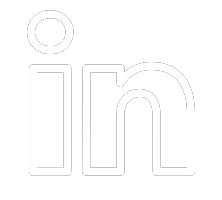There is nothing more exciting than embarking on a new design project. Whether you
are redesigning your website, creating a logo for your brand, or developing new
products, new endeavors are so beneficial. To ensure the success of your project and
align your vision with the expertise of the designer, it is important to establish clear
communication in the new relationship. Discussing important aspects upfront allows you
to set the stage for productive collaboration and carrying out remarkable results.
Before Designing
● Define Your Goals and Objectives – Articulate your goals and objectives for the project clearly. Know what it is that you want to achieve before collaboration. There are multiple different goals you can achieve from sharing your aspirations such as increasing brand recognition, improving user experience, or conveying a specific message. Sharing your aspirations allows your designer the ability to tailor their approach accordingly and help you reach your desired outcome.
● Describe Your Target Audience – Prepare to provide detailed insights about your target audience. Understand who you want to attract and what their preferences, demographics, and behavior patterns want to see. Having an understanding of your audience is fundamental in crafting designs that resonate with them. Sharing this information with your designer can create visuals that effectively communicate with your intended audience.
● Share Your Brand Guidelines – If you are already confident in the brand you have established, be sure to provide your designer with brand guidelines. These guidelines typically include information about your brand’s color palette, typography, logo usage, and overall visual style. It is crucial to remain consistent across different platforms for maintaining brand identity and recognition.
● Offer Examples and Inspiration – Compile a collection of design examples and inspiration that align with your vision. These could be other websites, logos, or product designs that you find appealing. Using these references with your designer will give them a more profound understanding of your aesthetic preferences and can serve as a starting point for discussion.
● Discuss Project Scope and Timeline – Clearly define the scope of your project, including deliverables and deadlines. Openly discuss the key milestones and expectations for each phase of the design process. Establishing a timeline and scope, you and your designer can manage expectations and avoid potential miscommunications or delays.
● Communicate Your Budget – Be up front and transparent about your budget constraints. Understanding your financial limitations will allow your designer to propose realistic solutions and prioritize their efforts accordingly. A clear budget ensures that the designer provides appropriate options while keeping your financial boundaries into consideration.
● Encourage Open and Engaging Communication – Establish a communication plan with your designer that works for both of you. Determine the preferred mode of communication such as email, video calls, or project management tools. Encourage open dialogue and regular check-ins to provide feedback, track progress, and address and concerns. Collaborative approaches foster a stronger working relationship and meet your expectations.
The key to a successful project is effective communication with your designer. Discussing the key elements of starting a new project with your designer sets the foundation for a productive collaboration. Sharing examples and establishing a clear scope, timeline, and communication plan will help your designer capture your brand essence. The more transparent and thorough you are in your initial discussions, the greater the likelihood of achieving outstanding design outcomes.
Check out our website for more information to help gain an even better understanding of what we do. Our website also includes endless amounts of successful projects and where our clients come from. On our website you will also have access to information on the members of our team. We are also active on social media accounts like Facebook, LinkedIn, and Twitter providing more detail on what our goals are for the clients we work with. Let us help turn prospects into customers through awareness, consideration, conversion, and loyalty.




